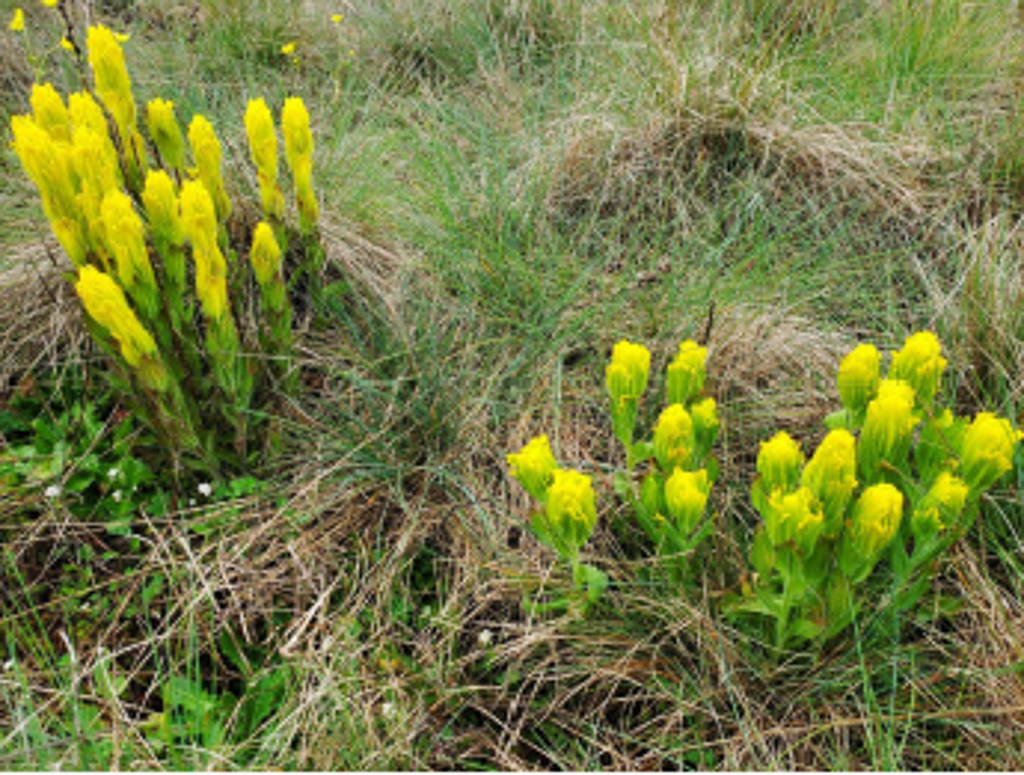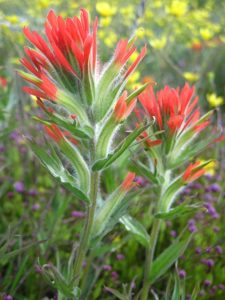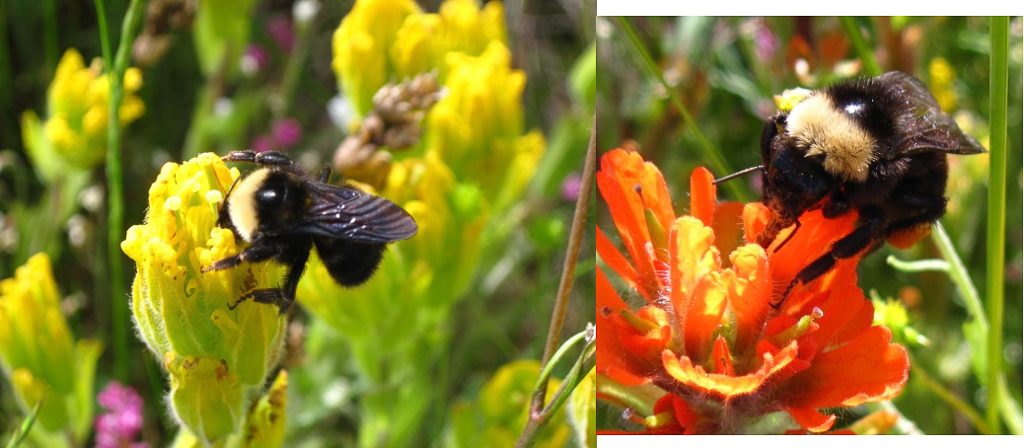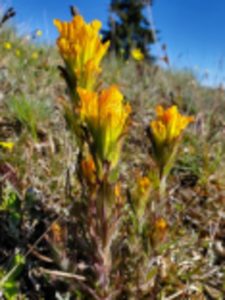Blog Post and photos courtesy of Ivy Clark
Lauren ‘Ivy’ Clark studied the hybridization of Castilleja levisecta and C. hispida in restoration sites for their Masters thesis at the University of Washington before becoming a restoration technician for the Center for Natural Lands Management.
Castilleja Relationship Status- It’s Complicated
The plant genus Castilleja is somewhat notorious among the botanical types. It’s the paintbrush genus with showy columns of frilly warm hues artfully blended from the green frilly leaves below. Paintbrushes, like the endangered golden paintbrush and harsh paintbrush of our South Sound prairies, are aptly named- resembling chunky bristles dipped in color. Yet like so many plants they are more complex than they look.
First off, those aren’t petals. They are more like leaves. Showy leaves adapted to drawing in pollinating bees, called bracts. These are a step between true leaves and true petals, which are themselves fancy adapted colorful leaves shaped to enfold or encircle the reproductive organs the pollinators will transfer pollen between. The true petals of a Castilleja flower are much smaller tubes of color forming a “galea” or beak enclosing the other flower parts. Color coordinated, of course. Those chunky brushes are more interesting than first meets the eye. And when you go even deeper, or later in the flower’s “story”, so to say, it gets downright daytime soap opera dramatic, evil twins and casual affairs and all.
The two species that overlap in the remaining lowland prairie system today look fairly similar and very much like most other Castilleja species. Golden paintbrush, Castilleja levisecta, is truly golden and only ever this rich burnt yellow hue with more tightly formed flower spikes jutting out of the warm prairie soil like dipped brushes.

Castilleja levisecta, photo by Ivy Clark
Harsh or hardy paintbrush, Castilleja hispida, is most commonly orange but ranges across the warm hues from a deep crimson to a very uncommon Mary Kay pink and even yellow with a flower form more like you flicked the paintbrush out after dipping it; more splayed and with frillier looking bracts. Not petals, remember? There will be a quiz at the end. Harsh paintbrush is hardier, growing in more habitats than just the prairies and able to withstand more disturbances. This is part of why Golden paintbrush is so rare. Yet bees love both. As do the caterpillars of butterflies, including the also endangered Taylor’s checkerspot butterfly. It’s getting complicated already, can you tell?

Castilleja hispida, Photo by Ivy Clark
The prairies are home to both paintbrushes and they look fairly similar, and indeed bumblebees as well as others bees pollinate both plants.

Bumble Bees on levisecta and hispida, Photos by Ivy Clark
There’s an interesting thing about Castilleja species that overlap in their population territories. It’s what I like to call a promiscuous genus, where different species can relatively easily interbreed and blur the lines of which species is really separate from which. They aren’t solely capable of reproducing with their own species. And they form hybrids. Like mules. Think of a plant population Venn diagram, with a new hybrid species (so to say) where the circles overlap.

Castilleja Hybrid, Photo by Ivy Clark
The normal occurrence with two relatively common species is no concern to botanists. Let nature do its thing and study it for interest. But we have a rare Castilleja species that indeed interbreeds with a common one on the South Sound prairies. Cue the gasp from the soap opera audience, or the botanists. The concern is that the rare species could be outcompeted and out bred by the common one and their hybrids. Do the plants care? They just go with however the bees move their pollen. But the humans care, especially because people removing golden paintbrush habitat is a major reason it is at risk of totally disappearing. That is why, like the brilliant and attractive doctor who tries passionately to pull the nearly dead costar from their coma to be reunited with the long lost twin they never knew, the people caring for the prairies take a little extra care reintroducing these paintbrushes into recovering sites. The great news is golden paintbrush populations are being pulled back from the brink with great success. To keep the bees from cross pollinating the plants, just in case, they are kept at a distance from each other. You can still see both however at certain sites, usually with a wide buffer of land chaperoning the members of this promiscuous, passionate, and radiantly beautiful genus of Castilleja. Their relationship is complicated, at least how we humans see it, but we so enjoy watching them develop.
